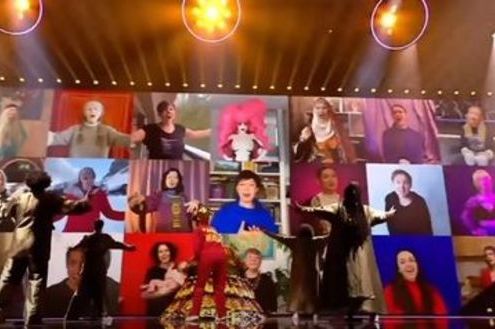The silver legend of the Caucasus

By Vestnik Kavkaza
The exhibition titled “The Silver Legend of the Caucasus. Manaba Magomedova” opened in the Moscow State History Museum. Honored Artist and People’s Artist of Dagestan, Honored Artist of Russia and Georgia, Manaba Magomedova was the first and still the only woman to acquire the difficult art of Kubachi silver and arms skills. Today her works remain deposited in the best Russian and foreign museums and in private collections all over the world. Jewelries, tableware, jewel-boxes, household things, ethnic musical instruments, and weapons are presented at the exhibition, as well as Manaba’s creative workshop with her tools and sketches.
“The story of the exhibition is miraculous,” Galina Smorodinova, the leading scientist of the precious metals department of the SHM, says. “I went to Tbilisi and there I met Manaba. She was a small elegant old woman who looked great. We recognized each other because she often visited our museum and gifted her works to us. I went to Manaba’s apartment and she said that she wanted to organize the exhibition… It is easy and cheerful to speak about Manaba as she was stunningly light person who lived according to commandments. She gave love to people and she emitted love.”
Leila Izabakarova is Manaba Magomedova’s daughter. She is a famous metal crafter and continues the family Kubachi tradition. She spoke about Manaba’s path as an artist: “She didn’t use a drilling machine like modern jewelers. She had a hand drill, she used old methods which she learnt from her father, she had tools from her father, which used to belong to her grandfather and so on. There is a cigar case made by her father, my grandfather. The work is impressive – the phone is engraved and the motive is white. It is a very difficult technique for silver. But Manaba’s father didn’t like the work and he put it off. When father died, Manaba saw the work and decided that it is an interesting occupation. It was interesting for her to learn engraving. A close friend of her father, Ibragimbekov, who came to Tbilisi saw her works and took her to museums; he realized that it would be interesting for a ten-year old girl to learn how to engrave.”
The head of Dagestan, Ramazan Abdulatipov, told Vestnik Kavkaza: “Dagestan has established centers of traditional culture in Makhachkala, in 20 regions and towns. We are reviving our traditional culture. We will found labs of national tools, labs of national music, labs of national costumes. At the same time, we don’t immerse ourselves in ethnography, we want our tradition to continue. We want to combine traditional and modern art. Dagestan has existed for several centuries. Twelve generations have been working with the art, goldsmiths, for example. Twelve generations mean from 15th or 16th century. I think this art is even more ancient. Our ancestors did their best for we have our name, including names of masters, artists, crafters.”
Abdulatipov noted that today Dagestan should continue this today and involve children and grandchildren into it: “When people, crafters do their business at the highest level, it doesn’t require special propaganda, as people will see it for certain, as people naturally strive for beauty. And it is important to produce beauty.”
According to Abdulatipov, “it is very rare when Dagestani artists or crafters are presented in the SHM. The History Museum possesses unique treasures, unique collections; and it is a big deal to organize an exhibition of a Dagestani artist here.”
4745 views
Поделиться:
- ВКонтакте
- РћРТвЂВВВВВВВВнокласснРСвЂВВВВВВВВРєРСвЂВВВВВВВВ
- Telegram
- Viber
- Skype





